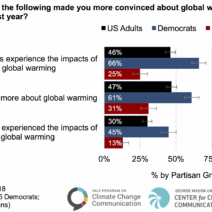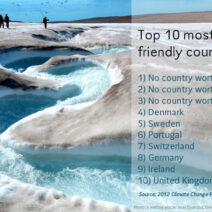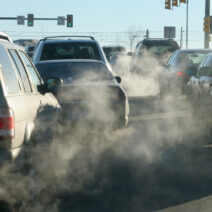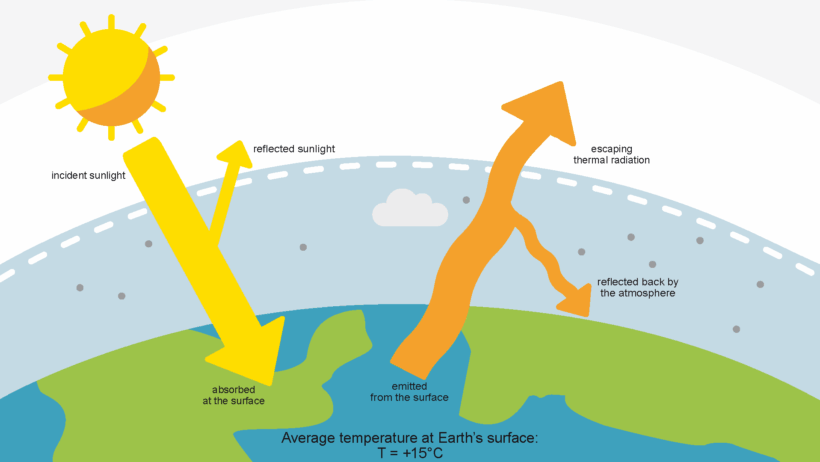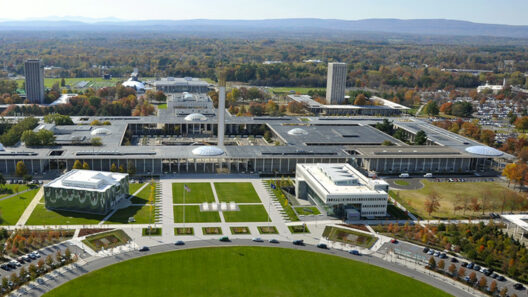Have you ever thought about how a cozy greenhouse keeps plants warm, even in the chill of winter? Now, imagine turning that greenhouse into a hot house, not for nurturing crops but for heating the entire planet. This transformation from a benign greenhouse effect to a perilous hot house phenomenon is critical to understanding the nuances of global warming.
To comprehend how global warming manifests, one must first grasp the fundamentals of the greenhouse effect. This natural process allows the Earth to maintain a temperature suitable for life. Solar radiation enters the atmosphere, where some of it is absorbed by the Earth’s surface and subsequently re-radiated as infrared energy back into space. However, certain gases in the atmosphere, known as greenhouse gases (GHGs), trap a portion of this outgoing infrared energy, leading to a warming effect.
Greenhouse gases include carbon dioxide (CO2), methane (CH4), nitrous oxide (N2O), and water vapor. While these gases occur naturally, human activity—through burning fossil fuels, deforestation, and intensive agriculture—has significantly increased their concentrations. This surge results in an enhanced greenhouse effect, whereby more heat is retained than necessary, thus propelling global temperatures to unprecedented levels.
Let us explore the primary contributors to this alarming phenomenon. First and foremost, carbon dioxide is the most abundant anthropogenic greenhouse gas. When we burn fossil fuels for energy or transportation, carbon from these fuels is released into the atmosphere. This has significant ramifications, as CO2 can stay in the atmosphere for centuries, continuing to warm the planet long after emissions have ceased.
Methane, though less prevalent than CO2, is far more potent. It possesses a global warming potential (GWP) approximately 25 times greater than that of carbon dioxide over a 100-year period. Methane emissions primarily stem from livestock digestion, landfills, and the production and transport of coal, oil, and natural gas. Its tendency to escape into the atmosphere without proper management has made it a focal point in discussions regarding climate change mitigation.
Another GHG contributing to this atmospheric conundrum is nitrous oxide, predominantly released through agricultural and industrial activities. Its GWP is about 298 times that of CO2. The widespread use of fertilizers and intensive farming practices, combined with land use changes, has led to a significant uptick in nitrous oxide emissions. Surprisingly, many everyday practices that seem benign can foster the release of these gases in significant amounts.
One must confront a provocative inquiry: What if we could turn back the clock and reverse the burgeoning tide of these emissions? While regaining a stable climate may seem akin to a fantasy, feasible strategies exist to mitigate the peril of global warming. For instance, enhancing carbon sequestration methods, such as reforestation, could prove invaluable. Forests act as carbon sinks by absorbing CO2, thus mitigating its presence in the atmosphere while also benefiting biodiversity and ecosystem health.
There is also substantial potential in adopting renewable energy sources such as wind, solar, and hydroelectric power. By transitioning away from fossil fuels, we not only reduce our carbon footprint but also promote sustainable practices that aim to preserve our planet for future generations. This transition, however, requires collective action from individuals, corporations, and governments alike.
Furthermore, the call for sustainable agriculture cannot be overstated. Implementing practices such as agroecology and permaculture can significantly diminish GHG emissions while promoting food security and enhancing local economies. Alleviating reliance on chemical fertilizers and pesticides aids in preserving the soil’s integrity and biodiversity—an essential component for long-term agricultural resilience.
As we delve deeper into the consequences of global warming, it is essential to understand the feedback loops that exacerbate the condition. For instance, melting polar ice caps decrease the Earth’s reflectivity or albedo, leading to more solar energy absorption rather than reflection. This increased heat accelerates ice melt and perpetuates a vicious cycle of warming.
Moreover, rising global temperatures can result in extreme weather events, including hurricanes, floods, and droughts, all of which have dire implications for human communities and ecosystems. These events not only threaten public safety and health but also jeopardize food systems and economic stability, underscoring the urgency of addressing climate change comprehensively.
The challenge doesn’t end with acknowledging the problem. Engaging in substantial policy changes is paramount. International collaborations, like the Paris Agreement, represent collective commitments to reduce GHG emissions. Such frameworks aim to limit global warming to well below 2 degrees Celsius above pre-industrial levels. However, achieving these ambitious targets mandates robust compliance and innovative actions from all nations, particularly those industrialized countries contributing the most historical emissions.
The consequences of inaction could lead us toward a dystopian scenario: a world where the climate crisis manifests as shortages of natural resources, increased migration due to climate refugees, and heightened competition for arable land. Can we truly afford to ignore these predicaments? The answer is an emphatic no.
In conclusion, understanding the transition from a greenhouse to a hot house is vital in combating climate change. Increased awareness, combined with concerted efforts to mitigate emissions, can steer us toward a sustainable and resilient future. It is incumbent upon every individual, community, and nation to participate in this challenge, ensuring we pave the way for a livable planet for generations to come. So, are you ready to join the fight against global warming?
